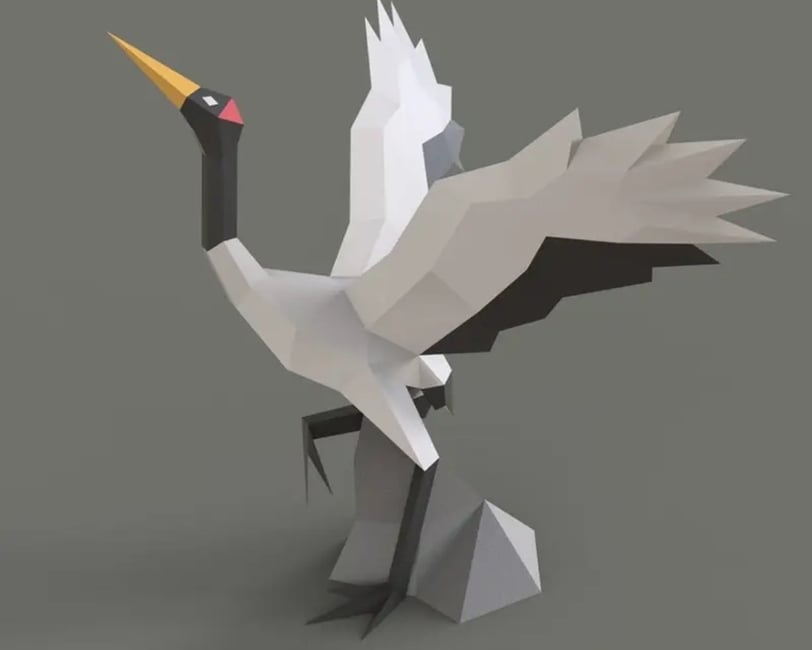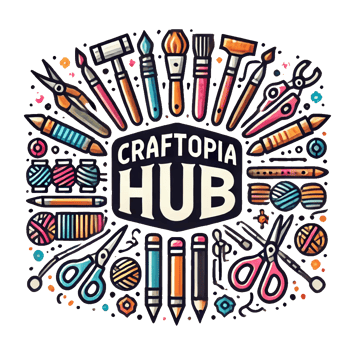Unfolding Creativity: The Art and Joy of Papercraft
12/9/20245 min read


What is Papercraft?
Papercraft is a creative hobby that involves designing and constructing models and figures from paper and other lightweight materials. This intricate art form allows individuals to express their creativity through the meticulous folding, cutting, and assembling of paper components. The concept of papercraft can be traced back to ancient times when artisans used paper for various decorative purposes. As the years progressed, particularly in the late 20th century, papercraft evolved into a popular pastime that appeals to people of all ages.
The evolution of papercraft has been significantly influenced by technological advancements, including the introduction of printable templates and digital tools for design. Today, hobbyists can access a plethora of resources online, such as websites and social media platforms, which have fostered a vibrant community passionate about this art form. This accessibility has made it easier for newcomers to engage with papercrafting, enabling them to create intricate models ranging from simple figures to complex three-dimensional constructions.
To embark on a papercraft journey, one requires a few basic tools and materials. While the most essential ingredient is high-quality paper, other common supplies include scissors, craft knives, cutting mats, and glue. Depending on the complexity of the project, additional items such as card stock, markers, and decorative papers may also be utilized. As with any creative endeavor, exploring different materials can lead to unique textures and finishes, enhancing the overall aesthetic appeal of the creations.
Papercraft not only serves as a means of artistic expression but also encourages fine motor skills and problem-solving abilities. The satisfaction derived from transforming a flat sheet of paper into a tangible object is a key element that draws enthusiasts into this rewarding hobby. Whether one is creating a delicate origami crane or an elaborate paper model, the joy found in the process is what makes papercraft a compelling and enduring practice.
Benefits of Engaging in Papercraft
Participating in papercraft offers a myriad of benefits that extend beyond the mere act of creating. One of the most notable mental advantages is the enhancement of focus. Engaging in this intricate art form requires concentration and attention to detail, which can significantly improve one’s ability to stay present and attentive in various aspects of life. This enhanced focus is particularly beneficial in an increasingly distracted world, as it encourages individuals to immerse themselves fully in a creative process that demands precision and thought.
In addition to improved focus, papercraft aids in developing fine motor skills. The precision required to cut, fold, and assemble paper into intricate designs can lead to better hand-eye coordination and dexterity. This enhancement in fine motor skills is not only beneficial for artistic pursuits but also translates into everyday activities, contributing positively to tasks like writing or even typing. Such improvements are especially important for children, as they lay the foundation for their overall developmental skills.
Moreover, the emotional rewards of engaging in papercraft should not be overlooked. Many individuals find that the process of crafting paper projects serves as an excellent form of stress relief. The calming nature of repetitive motions involved in cutting and folding can be meditative, offering a necessary break from the stresses of daily life. Additionally, the sense of accomplishment that comes from completing a project can significantly boost self-esteem and emotional well-being.
The social aspect of papercraft deserves attention as well. Community is fostered through shared projects and workshops, where enthusiasts come together to learn new techniques and exchange ideas. These gatherings provide ripe opportunities for individuals to connect with others who share similar interests, creating a supportive environment that enhances the joy of crafting. Overall, the benefits of engaging in papercraft are multifaceted, encompassing mental, emotional, and social dimensions that enrich lives through creativity and connection.
Getting Started with Papercraft: A Beginner's Guide
Embarking on the journey of papercraft can be both exciting and fulfilling for beginners. To ease into this artistic endeavor, it's crucial to start with projects that are designed for novices. Simple models such as paper flowers, bookmarks, or basic geometric shapes can provide a rewarding introduction without overwhelming complexity. These beginner-friendly projects will help you develop essential skills while building confidence in your abilities.
The next step involves gathering the right supplies. Start with high-quality paper, which can come in various colors and textures. Cardstock is often preferred due to its durability and ease of handling. Alongside paper, you will need tools such as a craft knife, scissors, glue, and a cutting mat. Markers or colored pencils can also enhance your creations, allowing for personal touches that reflect your style. When starting out, it is advisable to choose supplies that are easily accessible and within your budget.
Following pattern instructions is another vital component of papercraft. Many online resources, including tutorials and printable templates, are available to guide beginners through their initial projects. These resources often come with detailed steps that make it easier to follow along. As you progress, you may wish to experiment with modifying these designs or creating your own patterns. Maintaining a balance between following instructions and embracing creativity will enhance your papercraft experience.
Challenges are a natural part of learning any new skill. Beginners may encounter difficulties when dealing with intricate designs or cutting precision. To overcome these obstacles, practice patience and take breaks when needed. Seeking inspiration from online communities or social media platforms dedicated to papercraft can also provide motivation and new ideas, thus enriching your creative journey.
Exploring Advanced Papercraft Techniques and Resources
Advanced papercraft techniques offer seasoned crafters the chance to elevate their projects, allowing for more intricate designs and impressive results. Techniques such as origami, quilling, and pop-up mechanisms require a deeper understanding of folding and cutting methods. Mastering origami involves precise folds that create complex shapes, while quilling combines strips of paper rolled and shaped into decorative forms. Each of these techniques requires patience and practice, but the rewarding outcomes make the investment worthwhile.
Furthermore, pop-up mechanisms introduce a three-dimensional aspect to papercraft, enabling crafters to create cards and models that captivate the viewer. These methods typically involve engineering principles, where understanding how paper can bend and fold adds an exciting layer to your designs. Videos and tutorials showcasing these techniques can be invaluable for those looking to refine their skills, and many can be found through various online platforms dedicated to papercraft.
As crafters pursue more advanced methods, the importance of community support cannot be overlooked. Online forums, social media groups, and crafting websites often feature discussions that focus on sharing tips, tricks, and experiences based on complex projects. Engaging with a community allows for exchanging ideas and learning from others who share similar interests. Additionally, accessing downloadable templates can simplify the process of tackling sophisticated designs—these resources not only provide a framework but often come with guidance on specific techniques.
For those eager to enhance their papercraft journey, investing time into mastering advanced techniques, participating in related communities, and utilizing available resources will unlock new creative possibilities. As enthusiasm for papercraft continues to grow, the opportunities for engaging with new methods will only expand, allowing crafters to push their artistic boundaries beyond what was previously thought possible.
